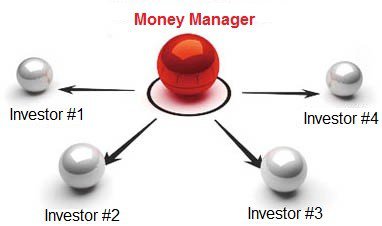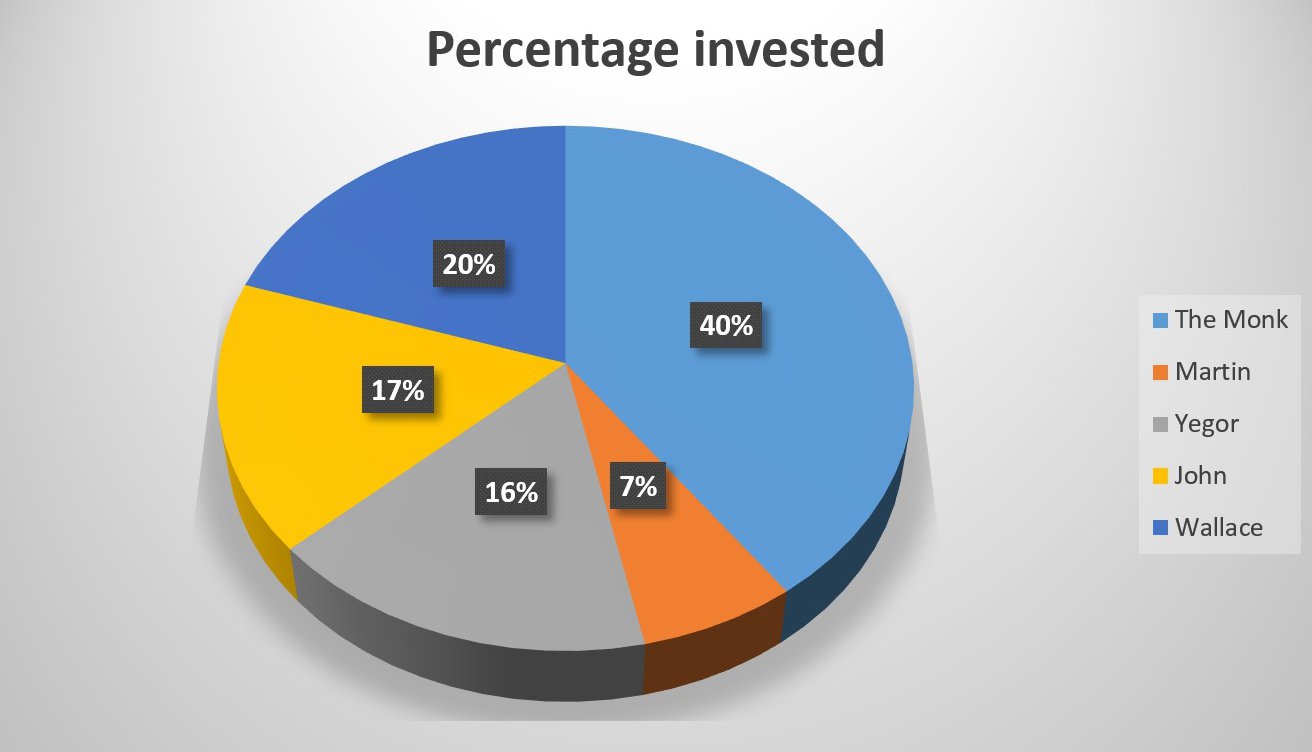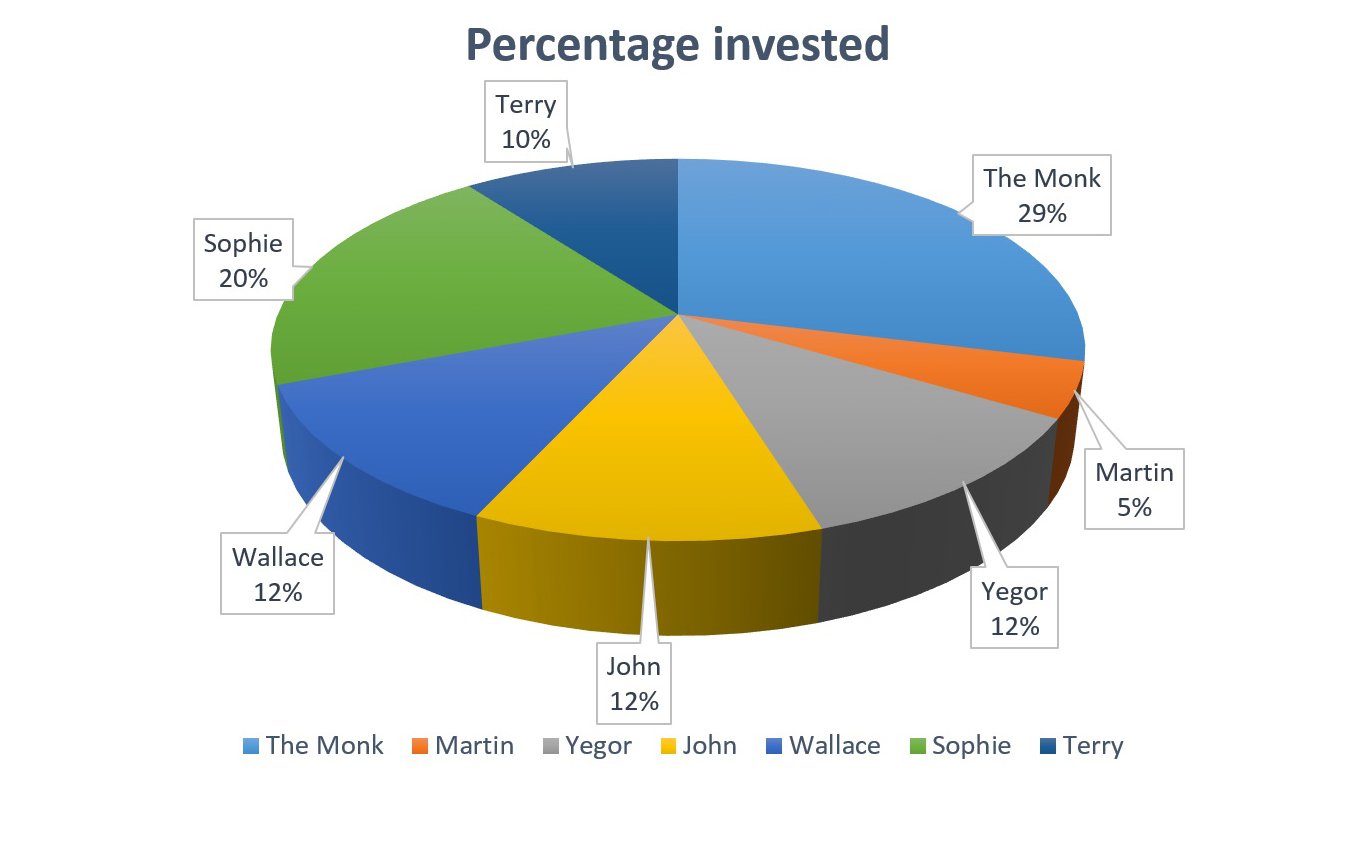Investing in Forex trading can be immensely profitable, but it’s also difficult to make money off it. Of all the traders who participate in the retail Forex market, about 90% lose money because the trade can be very difficult to master. To become profitable, you need years of practice crafting a trading strategy and becoming actively involved in day-to-day trading.
However, if you don’t have the time to master Forex trading, there are a few options that may still keep you in the game. One of the most popular is an asset management system known as PAMM (Percentage Allocation Management Module). In this system, you invest your money with an account manager who then makes the trading on your behalf, and you get to share in the profits made.

How PAMM accounts work
In essence, a PAMM account involves several investors pooling their money together and depositing it into a single trader’s account. The trader then invests their own money into the account and then makes trades with the accumulated capital. As you can see, there are various parties involved in a PAMM account, and these are:
- The investors – these are the individuals who deposit money into the PAMM account
- The money manager – this is usually an individual with extensive trading experience who uses the invested funds to make trades. They also have to invest some of their own money
- The broker – to keep an eye on the transactions, the broker acts as the overseer by providing the platform for the PAMM account and ensures that the investors aren’t swindled off their money

The role of the broker
At the end of the day, all trades must be made through a broker who provides the Forex trading platforms. In addition, the money manager needs to be a client with the broker for some time, over which time the broker can analyze their performance. When selecting a PAMM account, it is the broker who lists the best-performing PAMM account managers and provides details about how well they have been performing. In this sense, the broker becomes the overseer of all PAMM accounts, and that makes the choice of PAMM Forex brokers very crucial. The broker does not charge interest on the PAMM account, though, so there are no extra charges. We recommend you check out our in-depth analysis of ActivTrades Trading Services.
The choice of the PAMM broker is very much like choosing a Forex broker because the same qualities that make a good Forex broker also make a good PAMM broker. Therefore, you should do your research before investing in any PAMM account.
The role of the money manager
This is the individual who makes the trades. They have the most important job because it is they who have to keep their eye on the economic calendar Forex and decide when to make the trades. Besides the obvious, it is the money manager who also gets to set conditions for their PAMM account such as the minimum deposit, the interest charged, and the frequency of withdrawal.
The investors
The individual investors only have to make the deposit into the PAMM account and keep the conditions set out by the account manager.
The investment process
To help you understand more clearly, it would be better to use a hypothetical example of a PAMM account in action. In this case, the most trusted broker Forex would be XFX Ltd., and the company has a good reputation of over a decade. The Monk has been a trader with XFX for 5 years, during which time he has gained steady returns of 12% every month. He feels confident enough now to invest a bigger capital, so he applies with XFX to become a PAMM manager, and XFX agrees to it.
The Monk decides to put $1,000 of his own money into the PAMM account and starts trading for a few weeks. After a month, he has grown the account from $1,000 to $1,200, which is very good, and XFX lists The Monk among the best-performing account managers. Pretty soon, a few investors became interested and decided to invest with him. He tells them he only accepts minimum deposits of $200 and tells the investors to expect a 12% return but that he will take away 10% as profit.
4 investors agree to it, Martin, Yegor, John, and Wallace. Martin is very cautious, so he just deposits the minimum of $200, while Yegor and John each invest $500 and Wallace invests $600. The PAMM account now has $3,000. Returns will be issued depending on the investor’s percentage deposit into the fund, so each investor’s percentage is as follows:
- The Monk – $1,200 / $3,000 = 0.4 = 40%
- Martin – $200 / $3,000 = 0.067 = 6.67%
- Yegor – $500 / $3,000 = 0.167 = 16.7%
- Join – $500 / $3,000 = 0.167 = 16.7%
- Wallace – $600 / $3,000 = 0.2 = 20%

The Monk feels excited about this new venture, so he puts in more work and makes a 15% return after the first month, which grows the PAMM account to $3,450. As per the conditions set out, The Monk gets 10% of the profit, which is 10% x (3,450 – 3,000) = $45.
The remainder of the profit (450 – 45 = 405) is divided according to the percentage invested, so:
- The Monk – 40% x 405 = $162. Total capital = 1,200+162+45 = $1,407
- Martin – 6.67% x 405 = $27.01. Total capital = $227.01
- Yegor – 16.7% x 405 = $67.64. Total capital = $567.64
- John – 16.7% x 405 = $67.64 Total capital = $567.64
- Wallace – 20% x 405 = $81 Total capital = $681
If The Monk were allowing investors to withdraw their investment after the first month, then each investor would withdraw their total remaining capital. However, let’s assume the investors are so happy, that they all choose to retain their capital, except Wallace who withdraws the profit and retains his original $600 investment.
By this time, The Monk is gaining popularity in XFX, and more investors, Terry and Sophie, choose to invest. Now, for this second month, the total investment will be as follows:
- The Monk – $1,407
- Martin – $227.01
- Yegor – $567.64
- Join – $567.64
- Wallace – $600 (because he withdrew his $81 profit
- Sophie – $1,000
- Terry – $500
Total = $4,869.29
The percentage investment will be as follows:
- The Monk – (1407 / 4869.29) x 100% = 28.9%
- Martin – (227.01 / 4869.29) x 100% = 4.66%
- Yegor – (567.64 / 4869.29) x 100% = 11.66%
- John – (567.64 / 4869.29) x 100% = 11.66%
- Wallace – (600 / 4869.29) x 100% = 12.32%
- Sophie – (1000 / 4869.29) x 100% = 20.54%
- Terry – (500 / 4869.29) x 100% = 10.27%

The Monk becomes even more motivated and makes a 20% profit in the second month. That raises the total funds in the PAMM account: 20% x 4,869.29 = 973.86 + 4,869.29 = $5,843.15
The Monk takes 10% off of the profits (10% x 973.86 = $97.39) leaving the remaining profits at (973.86 – 97.39) $876.47. Each investor now has their capital at:
- The Monk – 28.9% x 876.47 = 253.3. Total capital = (1407 + 253.3 + 97.39) = $1,757.69
- Martin – 4.66% x 876.47 = 40.84. Total capital = (227.01 + 40.84) = $267.85
- Yegor – 11.66% x 876.47 = 102.2. Total capital = (567.64 + 102.2) = $669.84
- John – 11.66% x 876.47 = 102.2. Total capital = (567.64 + 102.2) = $669.84
- Wallace – 12.32% x 876.47 = 107.98. Total capital = (600 + 107.98) = $707.98
- Sophie – 20.54% x 876.47 = 180.03. Total capital = (1000 + 180.03) = $1180.03
- Terry – 10.27% x 876.47 = 90.01. Total capital = (500 + 90.01) = $590.01
The trend continues following those guidelines, but you don’t always make a profit. In case The Monk makes a loss, he loses his 10% profit, and the entire PAMM account depreciates according to the percentage of loss suffered. The loss, too, is shared according to the percentage invested, so everyone loses only based on the amount they had deposited into the PAMM account.
Why invest in a PAMM account in the first place?
A basic fact about Forex trading is this, the higher your capital, the better your chances are of making higher profits. First, with higher capital, the money manager can buy or sell bigger lots and make more profit. By pooling investment funds together, the money manager has the freedom to make more trades, too, and by so doing, they can increase the probability of making profits. Finally, being stopped is every trader’s worst nightmare, but it can’t happen if there is substantial capital in the trading account. You are much safer with your funds in a PAMM account than when you’re acting as an individual with your funds.
PAMM accounts are ideal for anyone who is still an amateur trader still learning the ropes. Imagine you have $1,000 in your bank account and would like to get into Forex trading but aren’t ready yet. Keeping that money in your bank account would earn you very little interest because even the best bank may only offer 10% interest, after a whole year. On the other hand, a PAMM account can offer you a much higher payoff every month, such that you will have even more capital when you’re ready to start trading actively.
Features of a good PAMM account
Signing up to become a PAMM account money manager is easy, which is why a quick Forex broker comparison will give you hundreds of PAMM accounts to choose from. With a wider range of choices comes increased difficulty in identifying the best from the rest, but there are certain guidelines to identify a good PAMM account:
Experience
Every Forex broker offering PAMM account services will also display the time over which the PAMM account has been in existence. Alongside the period of existence will be a percentage gain over the entire period, then the latest performance down to the month and week. Of course, you want the PAMM account to have had consistent growth over the entire period, and it’s better if the PAMM account has been active for at least 3 months.
Another good measure of experience is how the money manager handles losses. This is measured by drawdown statistics which indicate how they recovered from losing trades. Every Forex trader will make losses during their career, but what makes a successful trader is how they deal with these periods of loss, and you certainly want your account manager to be very critical.
Trading style
Big risks certainly have big rewards, but may sometimes bring calamitous results. It depends on whether you wish to invest for a short or long period. Short-term investors may choose the high-risk manager because they can make massive returns in a short while. For long-term investors, though, it is advisable to choose the cautious manager because risky trading can sometimes lead to massive losses. While cautious trading may have small returns in the short term, it offers more security for your funds, making risk management an important issue to consider.
Conditions for investment
Every PAMM account will have its conditions, which include the commission charged by the manager, minimum deposit, and frequency of withdrawal. These are simple decisions, so just select the PAMM account that you find most favorable in your situation. At the same time, some conditions should be a warning sign, such as an unusually low commission. Trading is very stressful, and a money manager who offers only a small commission probably indicates that they may not be very keen on their trades.
Equity
This is the total amount of funds invested in the PAMM account. The amount of funds invested by the manager is the first thing to consider, then the funds invested by individual investors. A large amount of investor funds indicates trust in the money manager and proves that they are reliable and trustworthy.
There is a slight caveat, however, a larger equity prompts the account manager to take higher risks, and that can lead to losses. A PAMM account manager with a lot of new investors may take more risks to keep their investment. This is why experience is so important – a good manager will be able to control their emotions even when the stakes are higher and a lot of attention.
Differences between PAMM and other financial management systems
There are numerous ways to invest your money without being an active trader. You may have already heard about hedge funds and private equity funds, all of which use investors’ money to trade and make profits. PAMM is a bit different, though, and in several ways:
Minimum deposit
Private equity firms and hedge funds have a very high minimum deposit required before you can invest in such a firm. The most popular and top asset finance companies may require as high as $1 million, and most will require at least $100,000. PAMM account managers, on the other hand, are more flexible and can accept as little as a $100 investment. This makes PAMM accounts favorable for the less wealthy individual, yet allowing them to make profits more securely.
Percentage returns
Trading in any financial stage, whether stocks, commodities, Forex, binary options, or whatever is unpredictable. It is nearly impossible to attain a perfect string of profits because there will always be times when an investor makes losses. For this reason, hedge funds and private equity firms offer a small return percentage, say, 10% annually. With a PAMM account, the money manager does not have a fixed return percentage, which means you can get a much higher return. Besides, the money manager is investing their own money, so that motivates them to make as much profit as possible.
Monitoring
With a PAMM account, the manager is supposed to disclose every trade they make. You will thus be able to log in on your trading platform with Forex charts and an investor password to keep an eye on the trades the money manager has made; although you won’t be able to make the trades yourself. Nevertheless, it is much better than a big hedge fund which does not have to disclose where your money is invested.
Withdrawal
The period you have to wait before you can withdraw your investment may vary depending on the conditions set by the money manager. However, most PAMM Forex brokers will allow you to withdraw your investment even after a month. Some will even allow you to withdraw at any time you wish, and have the money immediately, although you might be charged extra.
A hedge fund, though, has a one-year period over which you can’t withdraw your money, only after the second year will you be able to withdraw your funds. Besides, the hedge fund has the right to refuse your withdrawal request if they feel it affects its business, which won’t happen with a PAMM account.
Interest rates
Most major investment firms will charge a relatively high interest on the profits made, while most PAMM accounts have only about 10% in interest rates. This is very good news for the individual with limited capital, but even a high net-worth investor can benefit from low interest rates.
If you still don't fully understand PAMM accounts, here's a video that explains it in very few words:

 ColombiaUS
ColombiaUS